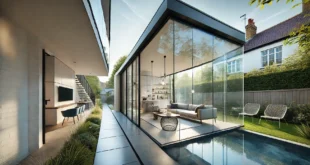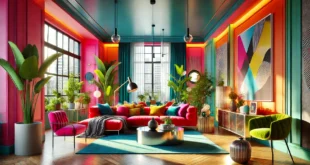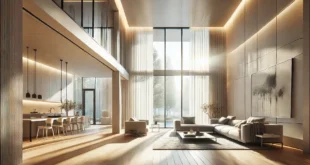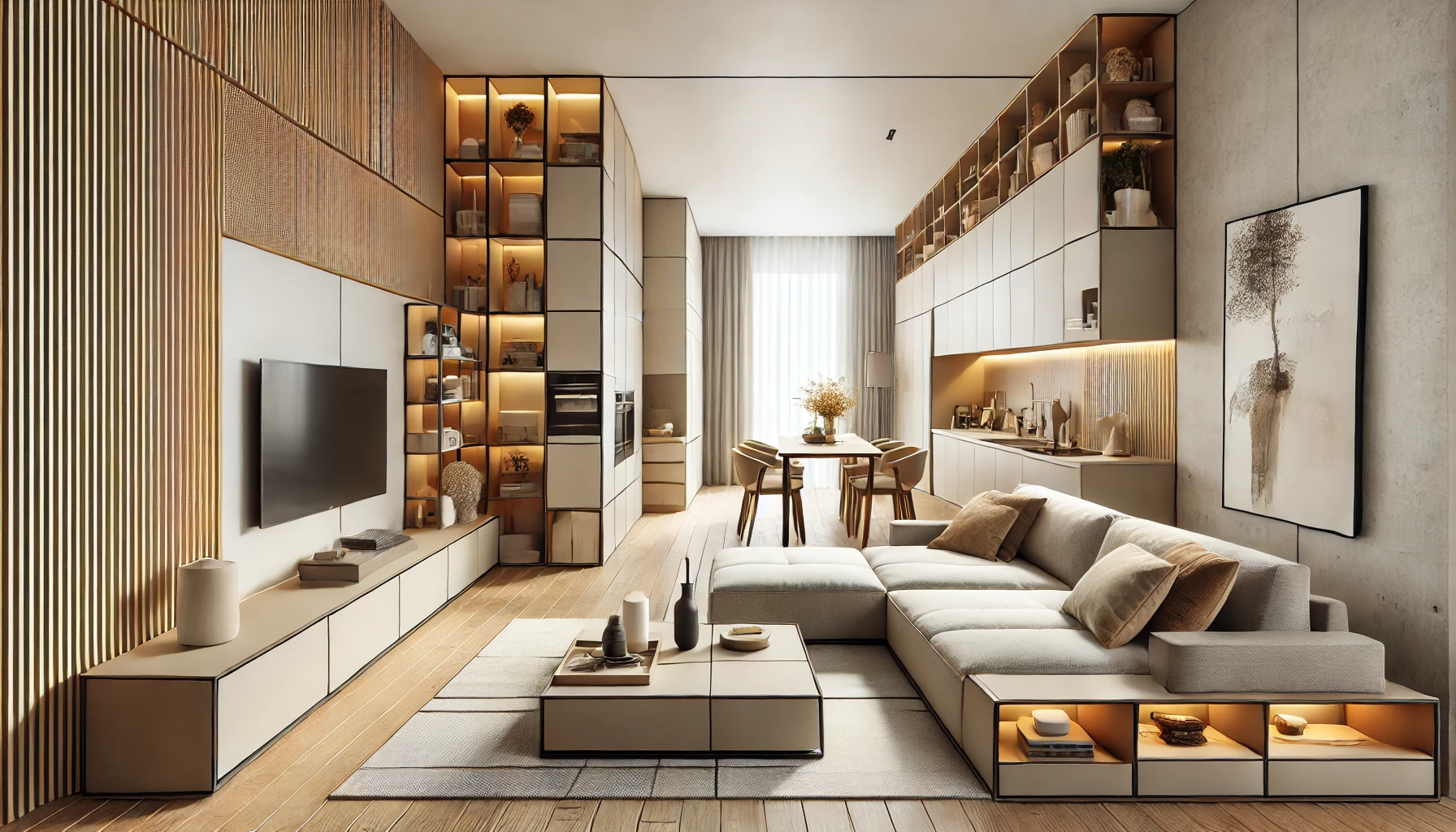
Welcome to the world of functional home design, where every space serves a purpose and style meets practicality. As a professional home designer, I know that creating a home that works for your lifestyle is key to comfortable living. Functional home design ensures that your space is both beautiful and efficient, with every square foot optimized for use. Whether you’re working with a large family home or a compact apartment, functional design can help you make the most of your space.
In this article, we’ll explore practical solutions to create a functional home layout, from furniture selection and storage solutions to multi-purpose rooms. Whether you want a modern, minimalist look or a warm, cozy feel, functional home design principles can help you achieve a harmonious blend of style and usability. Let’s dive into the key elements of functional home design to create a home that works for you and your family.
Functional Home Design Ideas: Start with a Plan
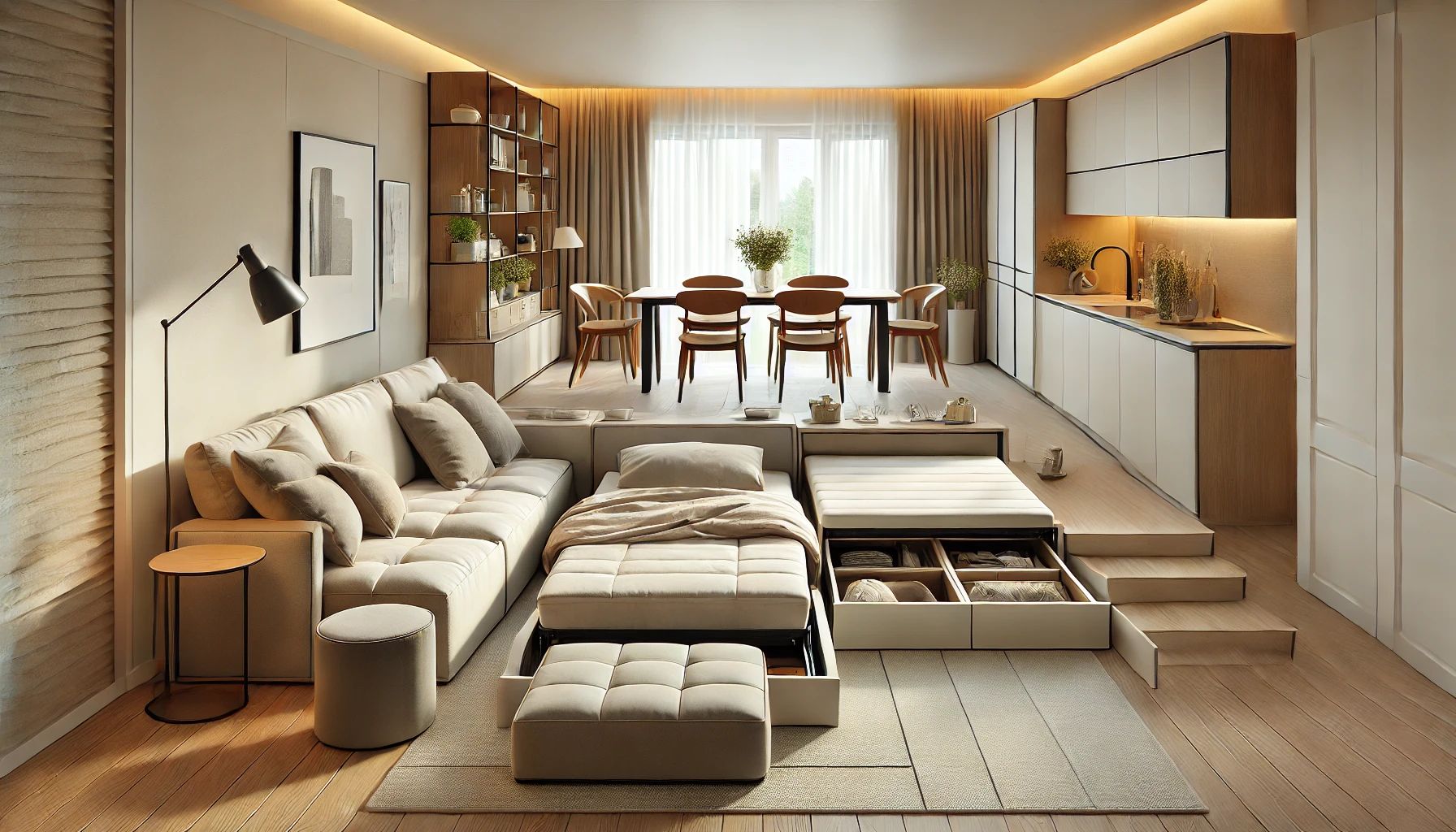
Consider Your Lifestyle Needs
Before you begin designing your home, take time to assess your lifestyle needs. Are you designing a space for a growing family, a home office, or a single-person apartment? Understanding how you use your space will help you create a design that works for you. For example, a family home might need a multi-purpose room that can serve as both a playroom and a study area.
Functional home design prioritizes your daily routines and creates layouts that make your life easier. Consider flow, traffic patterns, and how you move between rooms to create a design that enhances comfort and functionality.
Maximize Space with Multi-Functional Furniture
Multi-functional furniture is a cornerstone of functional home design. Pieces like sofa beds, ottomans with storage, and extendable dining tables serve multiple purposes and save space. In small homes or apartments, these items are essential for creating a versatile living environment that can adapt to your changing needs.
Look for furniture that offers storage or can be easily transformed to serve different functions. This approach ensures that every piece in your home serves more than one purpose.
How to Create a Functional Home Layout: Key Tips
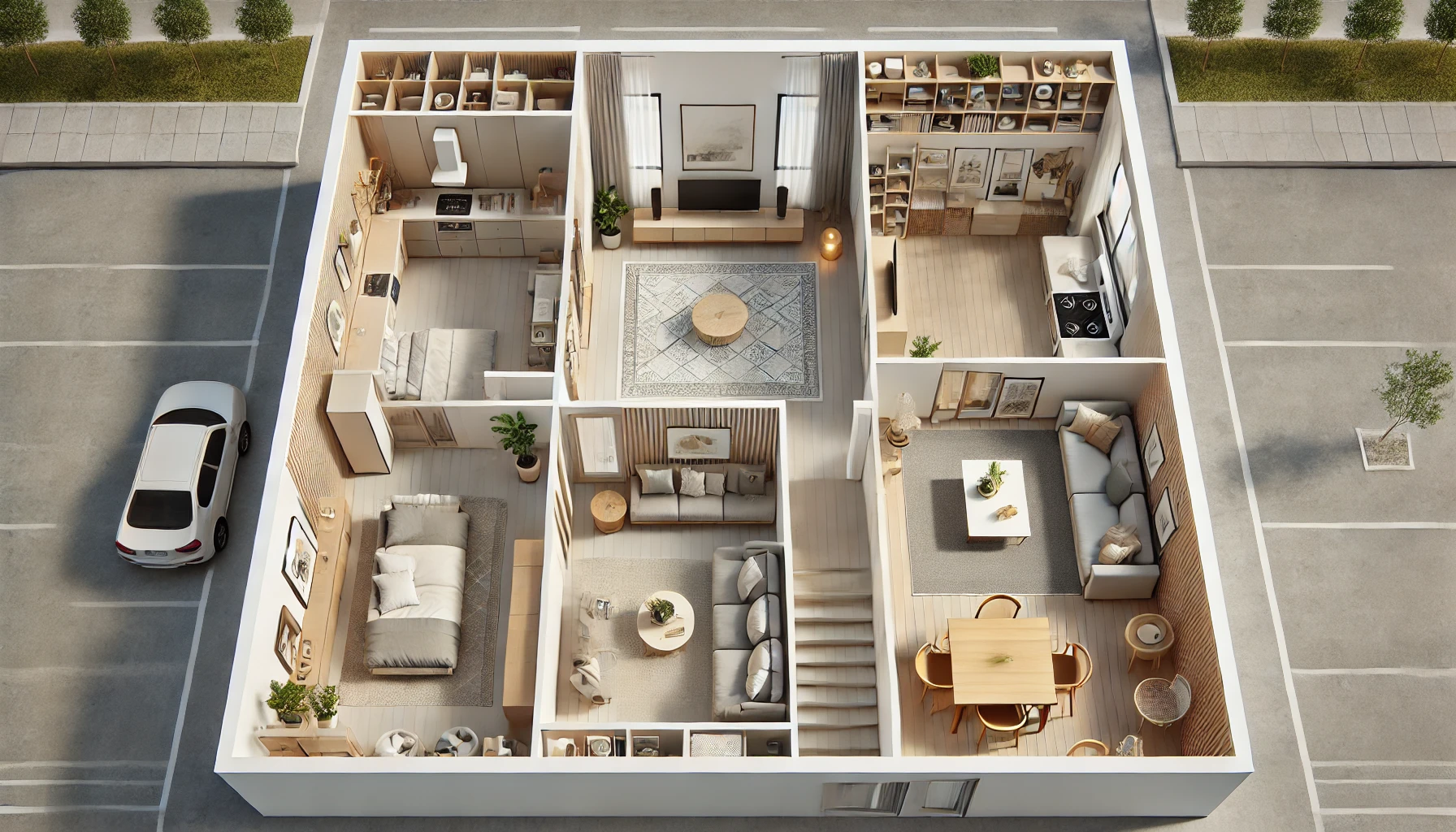
Prioritize Open Floor Plans
Open floor plans are popular in functional home design because they allow for flexibility and flow. By removing unnecessary walls, you create a more spacious feel and allow for easier movement between rooms. Open layouts also make it easier to adapt the space for multiple uses, such as combining living and dining areas.
Open floor plans are especially useful in smaller homes, where maximizing space is essential. Keep furniture minimal and functional to maintain a clutter-free look.
Use Zoning to Define Spaces
Zoning is an important concept in functional home design. Even in open-plan layouts, you can use zoning techniques like rugs, lighting, and furniture placement to define different areas within a room. For example, use a large area rug to create a cozy living space within an open-plan living room.
Zoning helps you create distinct functional areas without the need for walls, keeping the space open while maintaining organization and flow.
Best Functional Furniture for Small Homes: Space-Saving Solutions
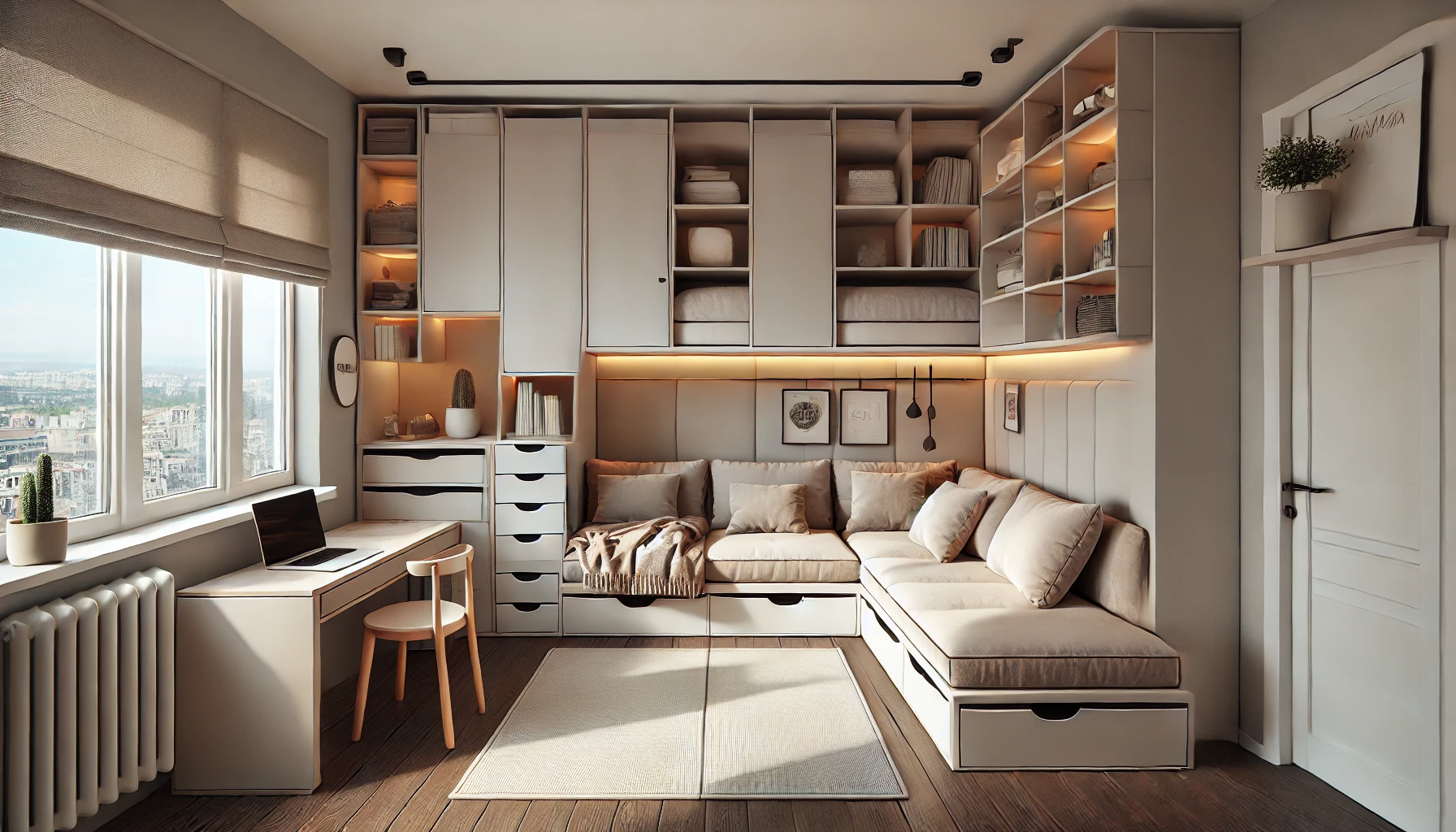
Sofa Beds and Sectionals
Sofa beds and sectional sofas are perfect for small homes where space is limited. These multi-functional pieces provide seating during the day and can be transformed into a bed at night. Sectionals with storage offer additional space to stow away blankets, pillows, or other essentials.
Choose neutral colors and sleek designs to keep your space feeling open and airy while maximizing functionality.
Wall-Mounted Desks and Shelving
In a small home, wall-mounted desks and shelving units are space-saving essentials. These pieces help you maintain a clean, clutter-free environment while providing ample storage and workspace. A wall-mounted desk can easily serve as a home office in a bedroom or living room without taking up too much floor space.
Shelving units keep items organized and off the floor, making small spaces feel larger and more organized.
Functional Home Office Design: Create a Productive Space
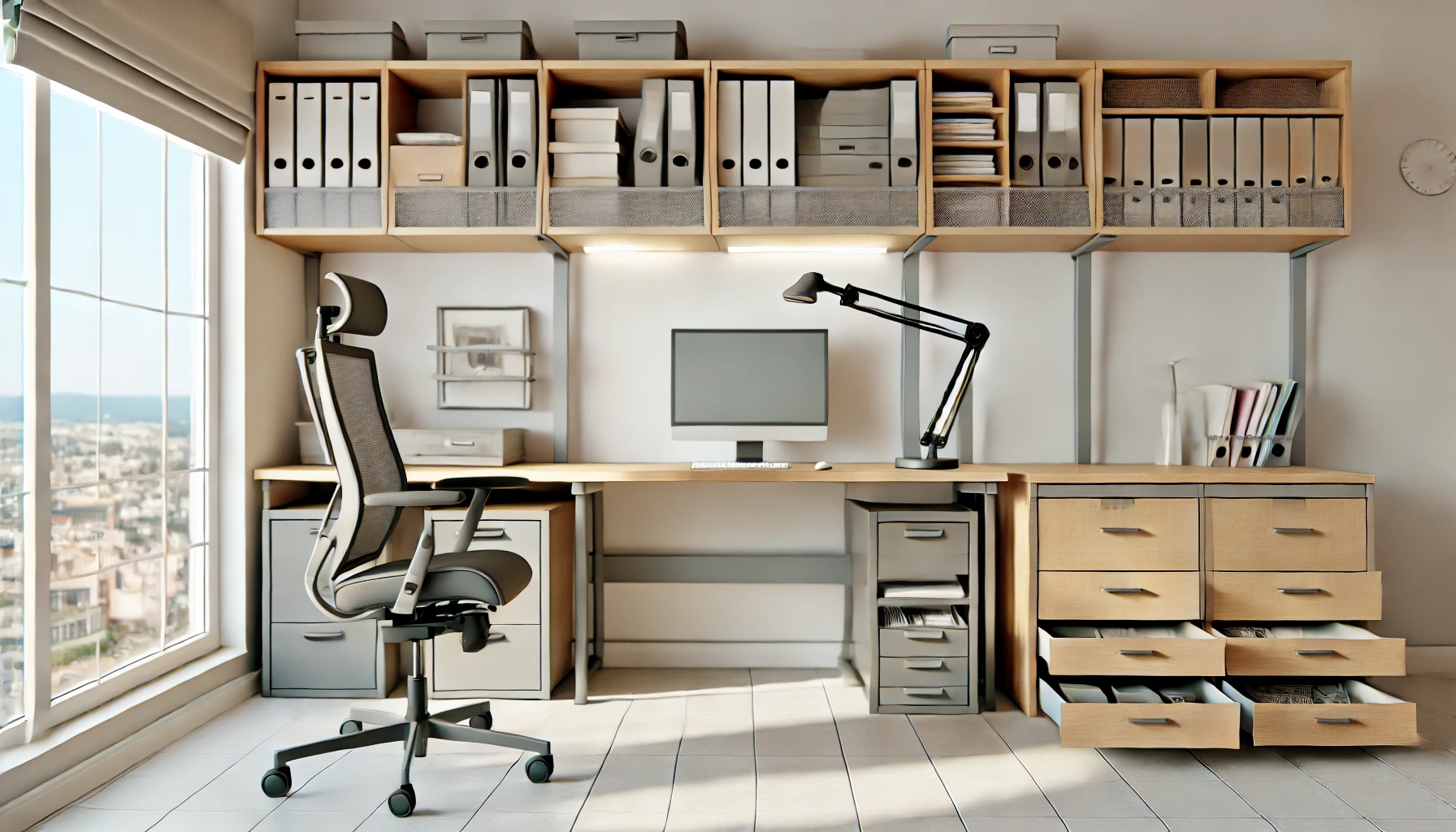
Ergonomic Furniture
When designing a functional home office, comfort and productivity are key. Choose ergonomic furniture, such as an adjustable chair and a desk at the right height, to ensure that you can work comfortably for long periods. Ergonomic furniture not only improves your posture but also boosts productivity.
A clutter-free workspace is also essential for staying focused, so invest in storage solutions like drawer organizers, shelving units, or cabinets to keep your office tidy.
Maximize Natural Light
Natural light is a major factor in creating a functional and pleasant workspace. Position your desk near a window to take advantage of natural light, which has been shown to improve mood and productivity. If natural light is limited, opt for task lighting that mimics daylight to brighten up your home office.
Good lighting is essential for maintaining focus and reducing eye strain, so make it a priority in your functional home office design.
Functional Kitchen Design Tips: Efficiency Meets Style
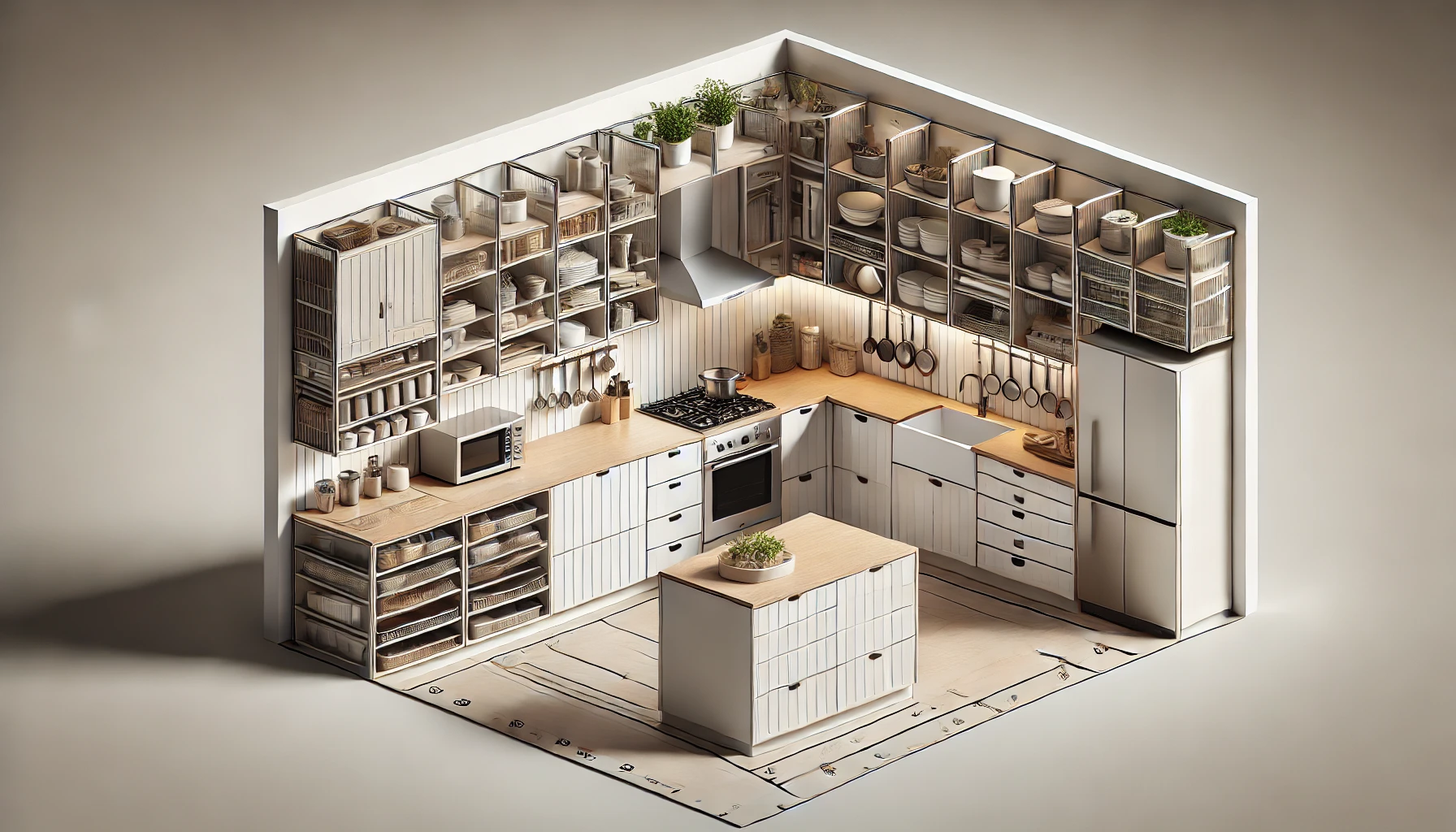
Optimize Kitchen Layout
The kitchen is the heart of the home, and functional design is essential for making meal prep easy and efficient. Create a layout that minimizes the distance between key areas, such as the stove, sink, and refrigerator, to streamline your cooking process. This layout, often called the “kitchen work triangle,” improves flow and reduces unnecessary movement.
Functional kitchens are designed with convenience in mind, so ensure that your appliances and utensils are easily accessible.
Maximize Storage with Vertical Space
In functional kitchen design, storage is a top priority. Maximize your storage space by using vertical solutions like upper cabinets, wall-mounted shelves, and hanging pot racks. This approach keeps counters clear and provides ample space for kitchen essentials.
Drawers with dividers and pull-out pantry shelves are also excellent solutions for keeping your kitchen organized and clutter-free.
Affordable Functional Home Design: Style on a Budget
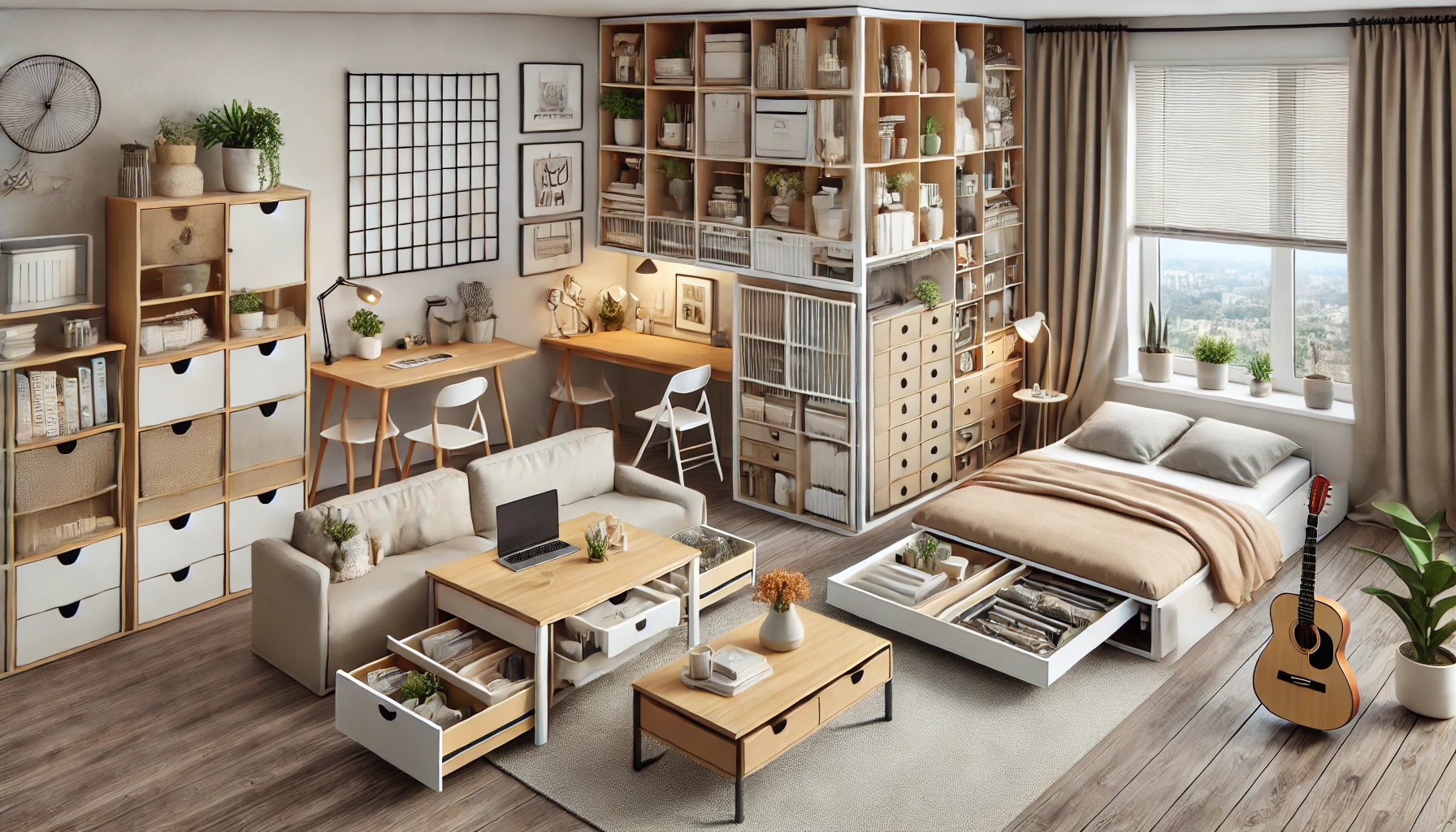
Shop for Multi-Functional Pieces
You don’t need to break the bank to create a functional home. Look for budget-friendly, multi-functional furniture that maximizes your space without compromising on style. Thrift stores, online marketplaces, and discount stores often carry affordable pieces that are both practical and attractive.
Focus on buying items that serve more than one purpose, such as coffee tables with storage, foldable dining tables, or beds with built-in drawers.
Repurpose Existing Furniture
Another way to create an affordable functional home is by repurposing existing furniture. With a little creativity, you can turn an old desk into a dining table, or convert a bookshelf into a stylish room divider. Repurposing furniture helps you save money while making the most of your existing pieces.
This sustainable approach also adds a personal touch to your home and reduces waste.
Create a Home That Works for You
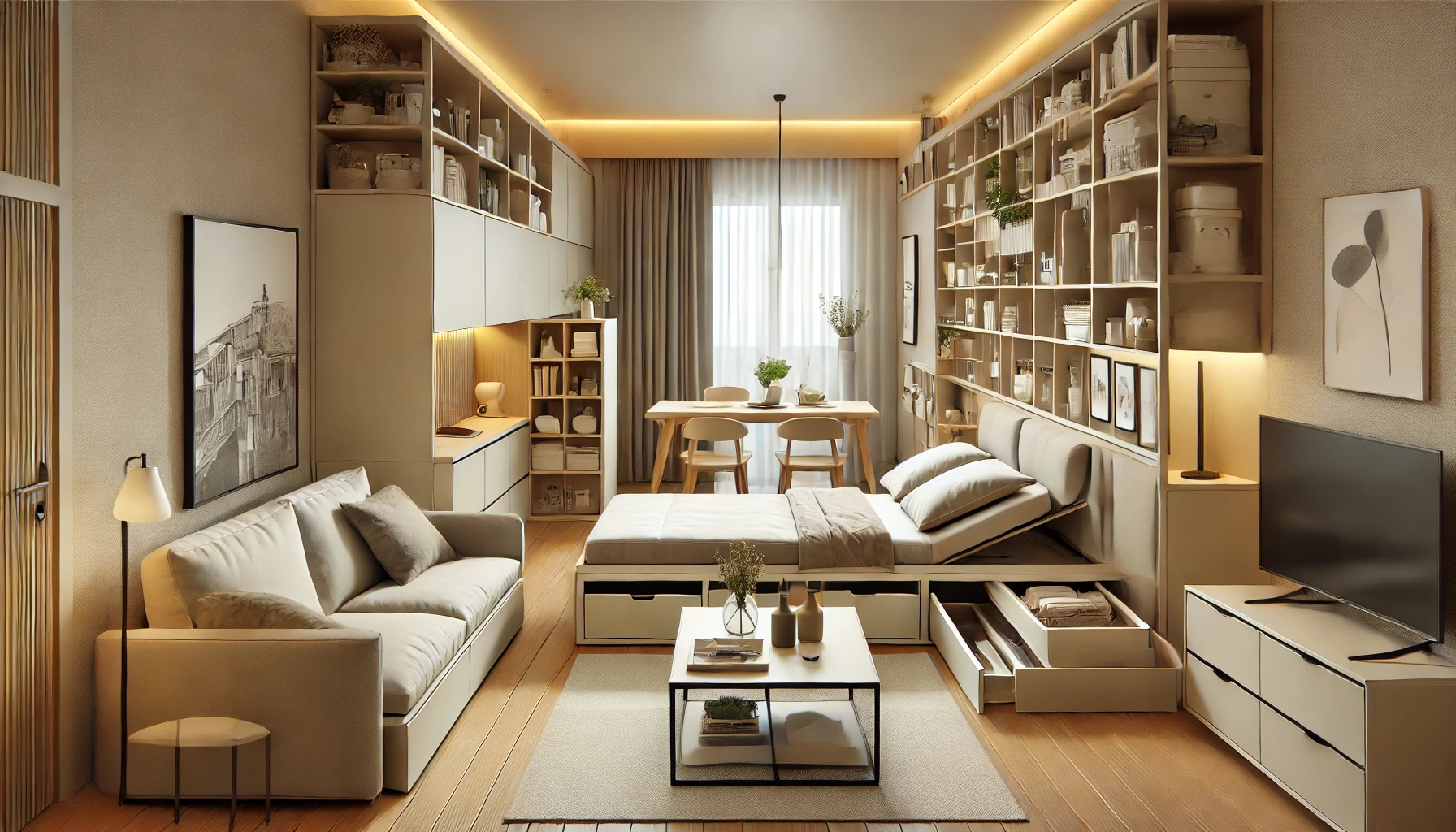
Functional home design is all about creating spaces that serve your lifestyle and make your daily life easier. By choosing multi-functional furniture, optimizing storage, and focusing on open, adaptable layouts, you can transform any home into a functional, stylish living environment. Whether you’re working with a large family home or a small apartment, these design principles will help you create a space that is both practical and beautiful.
Ready to redesign your home with functional design? Contact us for expert advice and customized solutions. Let us help you create a home that works for you and your family.
Let Us Help You Design a Functional Home
Thank you for exploring functional home design with us. We specialize in creating homes that are both stylish and practical. Whether you’re looking to update a small apartment or redesign a family home, we have the expertise to create a space that fits your needs.
If you’re ready to start your functional home design journey, reach out to us today for a consultation. Let’s work together to create a home that is beautiful, efficient, and tailored to your lifestyle.
F.A.Q: Functional Home Design
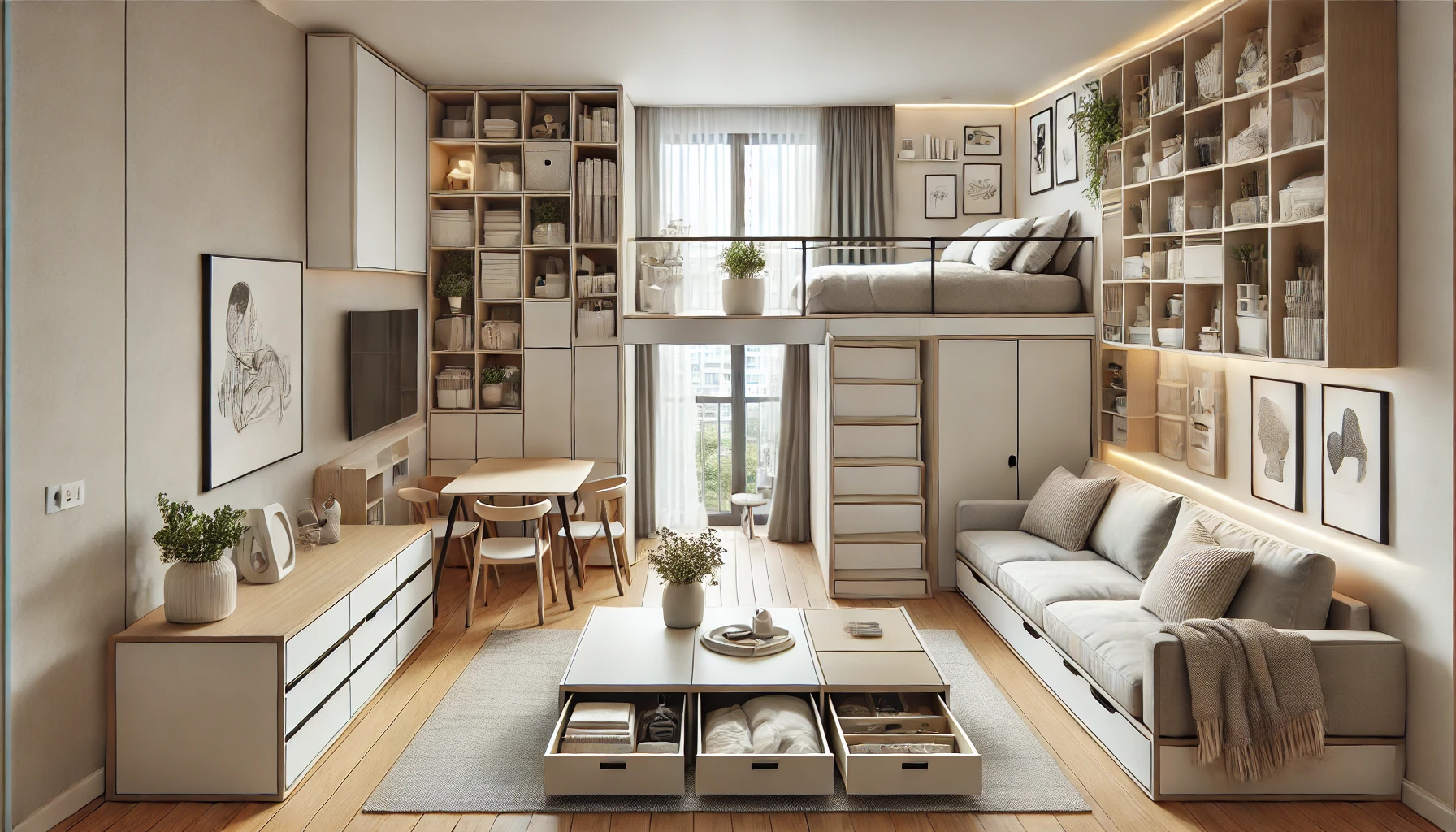
What is functional home design?
Functional home design focuses on creating spaces that are both practical and aesthetically pleasing. It ensures that every part of your home is optimized for efficiency, usability, and comfort while maintaining a stylish appearance.
How do I create a functional home layout?
To create a functional home layout, consider your lifestyle and daily routines. Maximize open spaces, use zoning to define areas, and choose multi-functional furniture that serves more than one purpose. This approach allows for easier flow and flexibility within your home.
What are some key elements of functional home design?
Key elements of functional home design include open layouts, multi-functional furniture, smart storage solutions, and the use of natural light. These components work together to create a home that is practical, comfortable, and visually appealing.
How can I make a small home more functional?
In a small home, functionality is crucial. Use multi-functional furniture like sofa beds or tables with storage, maximize vertical space with shelves, and keep the layout open. Avoid clutter by using smart storage solutions to keep everything organized.
What is the best furniture for a functional home?
Multi-functional furniture works best for a functional home. Choose items like extendable dining tables, sofa beds, or ottomans with storage. These pieces maximize space while serving multiple purposes, making them ideal for functional design.
How can I create a functional kitchen layout?
A functional kitchen layout should prioritize the “kitchen work triangle,” which minimizes the distance between the stove, sink, and refrigerator. Use vertical storage solutions like wall-mounted shelves and keep countertops clear to ensure efficiency and flow in the kitchen.
What are the benefits of functional home design?
Functional home design offers numerous benefits, including increased comfort, efficiency, and usability. It helps you make the most of your space by creating rooms that are easy to navigate, organized, and adapted to your lifestyle needs.
How do I make my living room more functional?
To make your living room more functional, choose multi-functional furniture like sectionals with storage or coffee tables that double as workspaces. Use zoning techniques with area rugs or lighting to define different areas for lounging, working, or entertaining.
What are the latest functional home design trends for 2024?
Functional home design trends for 2024 include the use of smart storage solutions, multi-purpose furniture, and open-concept layouts. There’s also a focus on sustainable materials, natural light, and integrating technology to enhance usability in modern homes.
How can I create a functional home office?
To create a functional home office, choose ergonomic furniture like an adjustable chair and a desk that fits your space. Maximize natural light, keep the area clutter-free with shelving and drawer organizers, and ensure that your workspace is comfortable and conducive to productivity.
What are functional storage ideas for small homes?
Functional storage ideas for small homes include using vertical storage like wall-mounted shelves, closet organizers, and hidden storage options such as ottomans or beds with drawers. These solutions help keep the home organized and maximize available space.
What is functional family home design?
Functional family home design focuses on creating spaces that accommodate the needs of all family members. It includes multi-purpose rooms, kid-friendly areas, and practical layouts that promote comfort, ease, and organization for everyday living.
How can I design a functional small space?
To design a functional small space, focus on keeping the layout open and using furniture that serves multiple purposes. Incorporate storage solutions like floating shelves or built-in cabinets, and choose minimalist decor to prevent clutter and maximize the feeling of space.
What is the role of natural light in functional home design?
Natural light plays a major role in functional home design by creating a more inviting and open space. Large windows, skylights, and light-colored walls can help enhance natural light, making rooms feel more spacious and improving overall comfort and mood.
What are the best ways to incorporate multi-purpose rooms in functional home design?
Multi-purpose rooms are an essential part of functional home design. Combine spaces like a home office and guest room, or create a playroom that doubles as a study area. Use modular furniture and zoning techniques to ensure that each area serves multiple functions while maintaining a cohesive look.
 Home Designing Get expert home decor tips and design inspiration at HomeDesigning.blog. Transform your living spaces with trending styles and DIY ideas!
Home Designing Get expert home decor tips and design inspiration at HomeDesigning.blog. Transform your living spaces with trending styles and DIY ideas!
